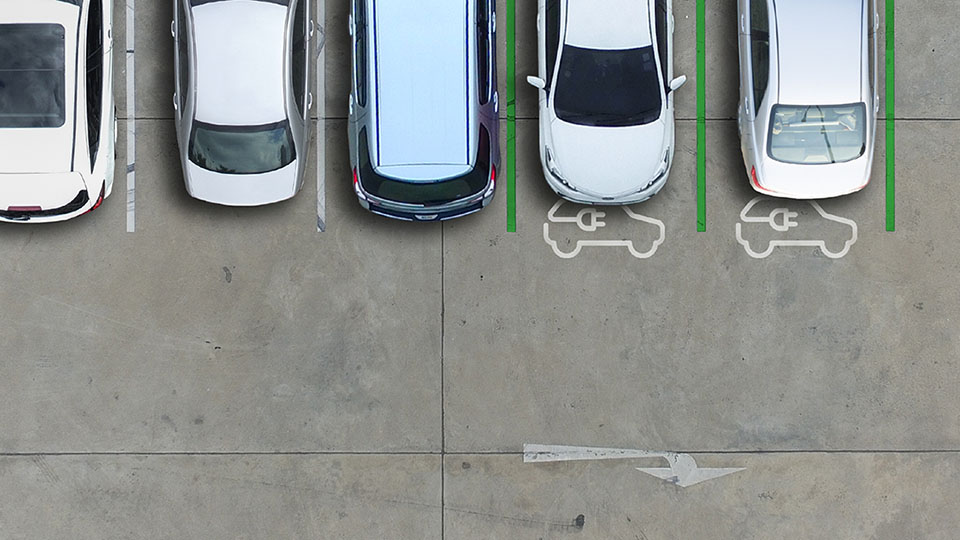
Field service fleets span a wide range of sectors, including facilities management, specialist trade contractors, field sales, and professional service providers. While these organisations operate in different industries, their fleet challenges are often shared:
- Business growth is often driven by acquisition, resulting in a patchwork of legacy fleet management systems and multiple telematics providers
- Low operating margins make it critical to maximise day-to-day efficiency and productivity
- Clients are applying increasing pressure to demonstrate progress on ESG goals and emissions reductions
- The easiest vehicles to electrify have already been converted; now, the focus is on the next, more operationally complex segment
- Drivers typically see themselves as technicians or operatives first, not professional drivers, making engagement and training more nuanced
- Vehicles are frequently dispersed across the country and often parked overnight at employees’ homes
- Many drivers and vehicles never return to a central depot, complicating oversight and coordination
When managing large and complex fleet operations, 100% data visibility isn't a luxury, but a necessity. It underpins every strategic and day-to-day decision a modern fleet team must make, across both internal combustion engine (ICE) and electric vehicles (EVs).
In this blog post, we explore four reasons why total visibility matters more than ever for field service fleets.
Enables strategic decision-making
When fleet teams have access to all their vehicle data in one place, in real-time, they can make far smarter decisions. That starts with having a telematics solution that connects with every vehicle in the fleet, regardless of the make, model, or drivetrain. OEM telematics connectivity can enable large fleets to connect a significant proportion of their vehicles almost instantly, without the expense and downtime associated with traditional installation.
When your team has access to data for the whole fleet, they can strategically consider every element of operations, from optimising productivity and fuel economy to analysing which vehicle manufacturers deliver the best ROI, or comparing maintenance provider performance, using wait times and repair effectiveness as retention criteria.
Allows for simultaneous optimisations
Large fleets rarely have the luxury of focusing on one improvement at a time. Instead, most need to continually enhance multiple aspects such as safety, efficiency, costs, sustainability, and service level compliance. This is only possible when you have access to rich data on the entire fleet, with the ability to define your thresholds and rules, and create highly customisable dashboards and reports to laser-focus on each area. Deep granularity of data allows you to surface the exact data points you need to take action quickly and decisively.
This kind of data environment becomes a strategic asset, empowering fleet teams to move from reactive to proactive management, constantly tuning their operations to improve overall performance.
Minimises unplanned downtime
For field service fleets, vehicles can be more than just the mode of transport to get an operative to a client’s site. They can also be a mobile toolbox, inventory store, and source of power on the worksite. This drives up the cost and complications associated with unplanned downtime, potentially impacting productivity and adherence to service level agreements (SLAs).
With a predictive maintenance programme informed by real-time vehicle fault codes and rich engine diagnostics, the workshop can identify and resolve small issues before they become major problems, keeping vehicles on the road.
High-frequency data collected from intense usage patterns enables even more accurate forecasting. Engineering teams can identify trends in wear patterns, battery degradation, or component stress, and schedule repairs in advance, before risking downtime. For electric fleets, this also reduces the risk of needing to substitute EVs with diesel vehicles, helping maintain uptime and progress towards emissions targets.
Makes EV adoption work in the real world
As legislation, internal ESG targets, and customer pressure grow for fleets to transition more of their vehicles towards electric, the complexity builds. Fleets are now finding that the easier vehicles have already been transitioned, and the next segment is more operationally challenging. This is made more complex for field service fleets, since vehicles are often parked overnight at employees’ homes.
For the next stage of procurement, fleets need to know dwell locations and times for all their vehicles for shared infrastructure planning, where charge points can be located on customer premises to increase the operational feasibility of EVs.
The responsibility then falls on the fleet team to make these new EVs work efficiently and productively. To do that, you need rich EV visibility. Your telematics solution should support all EV makes and models, alongside ICE vehicles, on one unified platform. By providing live state-of-charge data, EV routes can be created with complete range confidence. To support simple home charging policies, telematics systems must be able to measure electricity usage per vehicle, regardless of charger type, and support time-of-use rate tracking.
With full EV support, fleet teams can monitor and optimise vehicle health, energy consumption, charging behaviour, and range performance. This helps you select the right vehicle for the right job, train drivers to improve energy efficiency and extend range, and maximise the ROI from your EV investments.
Total visibility allows for total control
When you have access to all your fleet data in real-time, you can respond faster, plan better, and operate more strategically.
With a reliable, secure telematics platform that delivers consistent, granular, and customisable insights, field service fleets can unlock significant improvements in performance, cost, sustainability, and service quality. In a challenging operational landscape, 99% visibility simply isn’t enough.
Want to experience how full visibility can transform your field service fleet operations?
Subscribe to the Geotab Blog

Senior Marketing Specialist, SWE at Geotab
Table of contents
Subscribe to the Geotab Blog
Related posts

What Is fleet management? A complete guide for fleet managers
June 13, 2025
5 minute read

Minimizing downtimes in the LRM segment thanks to predictive maintenance
May 1, 2025
4 minute read



A successful electric fleet strategy starts with optimising fleet operations
August 23, 2023
4 minute read
